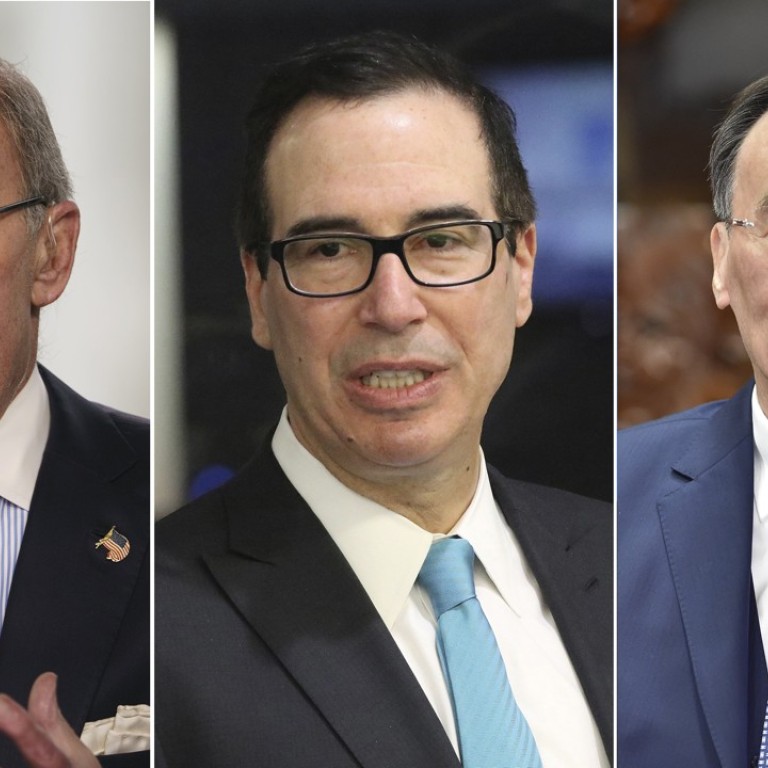
Is Donald Trump’s trade team ready to reach out to Xi Jinping’s right-hand man Wang Qishan for tariff truce talks?
US presidential advisers float possibility of inviting the Chinese vice-president for discussions before US levies go into effect
Some White House officials are trying to restart talks with China to avoid a trade war before US tariffs on Chinese products take effect July 6, three people familiar with the plans said, setting up a battle with others in the administration who favour a harder line.
Staff of the National Economic Council (NEC) have contacted former US government officials and China experts in recent days to gauge chances for high-level talks in the next two weeks, the people said on condition of anonymity to discuss the inquiries. One idea NEC staff floated was inviting Chinese Vice-President Wang Qishan before the tariff deadline, they said.
The outreach signals a willingness by some US officials to seek a truce before US$34 billion in Chinese products are hit with tariffs rather than trigger a trade war between the world’s two biggest economies. Still, the chances of such negotiations happening in the near term are slim as long as opponents inside the administration favour penalising Beijing. US President Donald Trump has shown no signs of backing down.
The White House did not immediately respond to a request for comment.
The US administration has said that after July 6, tariffs on an additional US$16 billion worth of Chinese goods will be imposed after a public review period. The tariff threats have hurt US stocks in the past week, with the Dow Jones Industrial Average headed for its eighth straight day of declines.
After China swiftly responded with counter threats on the same amount of tariffs and timeline, Trump on Monday directed the US Trade Representative’s office to identify an additional US$200 billion worth of Chinese products that would be subject to a 10 per cent tariff. The administration has not published a timeline for these tariffs.
“If it really does get to be a big war, we have many more bullets than any of these other countries,” Commerce Secretary Wilbur Ross said in a Bloomberg Television interview on Thursday.
There are different views within the Trump administration on what could be considered a win. Hardliners such as US Trade Representative (USTR) Robert Lighthizer and White House trade adviser Peter Navarro are pushing for structural changes to China’s policies. Treasury Secretary Steven Mnuchin and NEC director Larry Kudlow are more receptive to a deal aimed at lowering the bilateral trade deficit.

Divisions within the administration on how to deal with China make it harder for the White House to get Wang to visit on short notice. But other administration officials are thinking about bilateral talks in the longer term, the people familiar with the matter said.
A more realistic possibility would be for Wang to visit before the bigger round of tariffs is imposed, according to Derek Scissors, a China analyst at the American Enterprise Institute in Washington. The US still needs to release a product list for the threatened tariffs on US$200 billion of Chinese goods, and then there would be a 60-day comment period before those took effect.
“We just failed to reach a deal a few weeks ago, so reaching one in the next few weeks is unlikely,” Scissors said. “The real deadline is more like September 6 than July 6.”
The two sides have tried, and failed, to resolve their differences through earlier rounds of negotiations.
Ross told a Senate committee on Wednesday that previous talks with Chinese officials showed “that the administration is trying”, but that the two sides “were not able to accomplish enough to justify in the president’s mind not going ahead with the tariffs”.
“There are already some signs that we may get some ultimate solution,” Ross told senators at a hearing that focused on his agency’s Section 232 investigations into imports that pose a national-security threat. “I don’t think the Chinese want a trade war any more than we do.”
US-China tensions could be further strained before the tariff deadline. The Treasury Department is expected to announce measures to restrict Chinese investments in the US by June 30 as part of a probe under the USTR’s Section 301 investigation into alleged intellectual-property theft and the forced transfer of technology.

